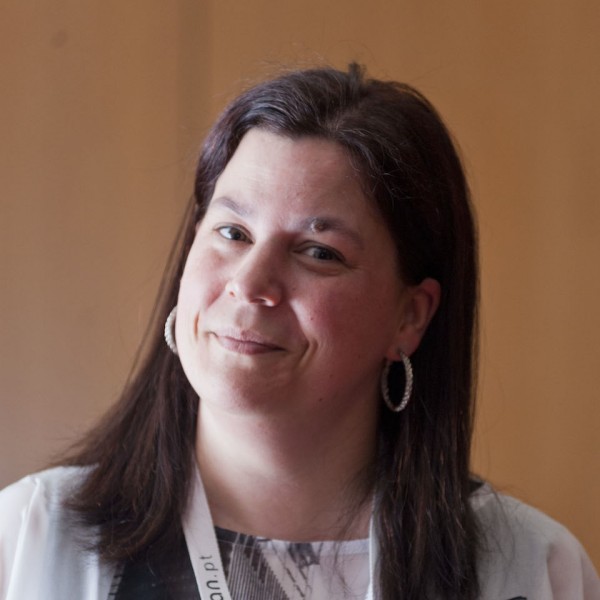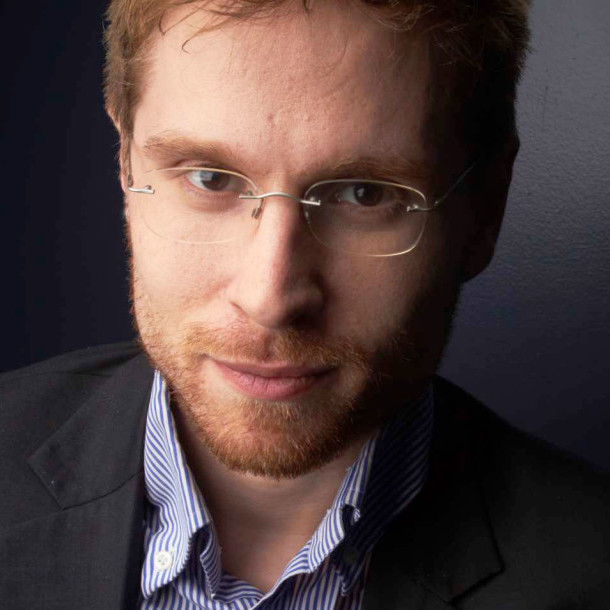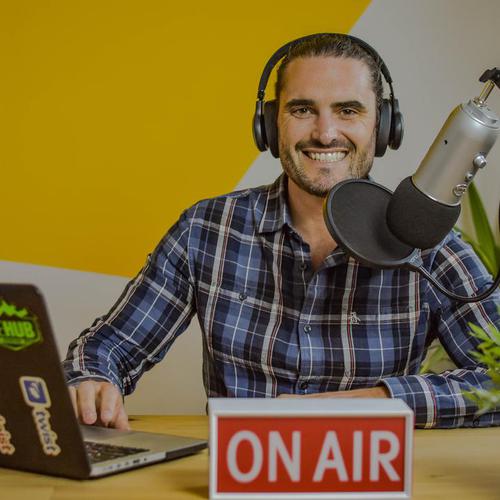You are not in control of your life until you are in control of your calendar.
Nash Ahmed is the CEO of Undock and knows what it’s like to be available to all of his team. “No matter what you’re doing, you’re never going to be able to give enough time to everyone on your team. It’s just really, really hard to do. So I just see that you get to 7, 8, 9, 10 employees, you’re done.”
At which point, Nash asks, “Is the job of a CEO just to talk to people?”
Respect your time
One of the things at the heart of a great digital workplace is a healthy respect for time, and letting other people control your calendar means there’s no respect. Controlling when you are available and when you need to do focused work is extremely important to anyone, but especially those who lead teams.
If you really want to fix the systemic problems in an office, you have to solve the time problem. Some things need to be handled in real-time, while others can be asynchronous. Great digital workplaces have developed a solution for these.
Checking out Undock
Undock is a tool that helps with scheduling, but it’s also a calendar. It can help you dial up or down how much of your day goes to meetings. It uses predictive intelligence to schedule meetings as you are typing emails.
Undock is a great example of software that partners with humans and makes their day better. Rather than your calendar controlling you, Undock puts you back in control.
Nash said that as a founder, he has a lot of things asking for his time, and that changes from quarter to quarter. But using a tool like Undock, he’s able to keep things under control. Because he can set how many meetings he gets in a day, “I know that I’m not going to be bogged down with things that are not critical to my main goal for the quarter.”
Undock has a powerful future ahead of it because it is starting off solving the central problem – how are we going to spend our time.
Links
Today, our guest is Nash Ahmed. He is the CEO and founder of Undock. Hey, Nash. How’s it going?
Hey, Neil, I’m doing great. Thank you for having me.
So Nash, you’ve been building products for a long time. Give us a little background about who you are.
Sure. I’m Nash. I am the CEO and founder of Undock which helps you instantly schedule, host, and document your meetings. I’m a computer science, went to school for computer science, got into web development, and then tripled into design, ended up in the telecommunications space for about a decade, which is kind of where I honed my interest in video conferencing and all these other communication tools. And yeah, that’s me. So designer, engineer, entrepreneur.
Tell us what led you to start Undock? What’s the problem that you’re trying to solve there?
The problem I’m trying to solve is managing my own availability. And the particular situation that led me to starting Undock was a moment when I’m in my office, and I’m on a call. And then I have another call that’s blinking on hold on my phone. And then the literal line of employees forms outside of my door, because they’ve now determined that is the only way they’re going to get time throughout the day, if it’s of any urgency to them. So immediately, my brain started firing, saying that can’t be the way I run this business and my other businesses and manage my availability and everyone’s access. To me, it’s not efficient for me, it’s not efficient for anyone else. So I looked online, because if there’s software out there, I probably used it. I am a software junkie. So I tried everything. Well, first, I looked for everything, and I saw a couple of solutions. Nobody is really tackling this holistically. So I first built a physical product to show my employees in my office. I was going to connect it to my phone, calendar, conferencing systems, project management tools, whatever, and just let them know, hey, I’m free now, we’re busy now, you don’t need to wait in a queue for me. And I decided to do that online because then everyone outside of my office could have that same information. Long story short, just kept on iterating on the product, and just discovered a couple of interesting approaches to solving, managing your availability and undock.
Cool. Well, let’s zoom out and talk about this problem, because availability is there. But when we talk about digital workplaces, upper level, level four, level five digital workplaces, we often focus on time and why time is so important. As somebody who’s running a business, as somebody who has a lot of people who are dependent on him, talk about how you view time and the time of the people that are working with you.
That’s profound. I’ll zoom in a little bit there. So the way I view the time of the people working with me, that’s how I like to say it, we actually labeled this problem, the absentee founder, because at some point, the founder just gets so busy, there’s no way they can give enough time. No matter what you’re doing, you’re never going to be able to give enough time to everyone on your team. It’s just really, really hard to do. So I just see that you get to 7, 8, 9, 10 employees, you’re done. You can’t give everyone enough time. And then your company scales to 50, then your company scales to 200, then your company scales to 500. And you don’t know 90% of your employees, let alone have enough time to just give to people. So part of solving that problem is having a mechanism that if you’re having 50, 100, 200 meetings per month, even if you’re spending two to five minutes scheduling each of them, the time that you spend doing that is literally hours that you could be spending giving time to other people. There’s that portion of it. I guess I can talk a little bit more about it now. There’s also the ability to, we call it scaling your availability. Let’s say you wanted to have some ongoing continuous open office hours with your team, but scheduling them routinely is a challenge. Something that we’re building and releasing in the first quarter of next year would allow you to have open office hours with your team at a flick of a button from anywhere, you could be seated on an airplane, probably not early next year, you could be seated in your living room at 8pm at night, and you can flip it on and wherever your global team is, they’ll get a notification that the CEO of said company is available. And they can have either a forum type office hours, or can have a cube office hours where you can just go in five minutes with each person, 10 minutes with each person. So we think finding ways to easily coordinate the meetings that you have, and then finding other ways to have face to face time with employees is critically important.
Let’s just talk about CEOs who do feel like they need to get that time. We talk about asynchronous, synchronous time a lot. You’re talking about meeting somebody in person, what is that like to be leading an organization and feel like the only way you can keep things moving is to give of your time, but it’s this pie that never gets bigger, like you only have so much of it every time. So just what is that like for you as a founder and CEO, and then the others experience?
Yeah, part of it is being able to have that open office hours type experience, again, either one on ones or group forum type sessions. But then asynchronous is huge for that. So we have our entire meeting platform, I can say it now, our calendar, Undock has a calendar, the events on our calendar, it is a opportunity for you to hold a lot of meetings that you would normally schedule, put on the calendar, get a bunch of people in the room, hold them asynchronously. I don’t know if I’m talking too much about the product, and you want to talk more theoretically here, but it gives you a space for you to write out an agenda in either text form, video form or audio form and for anyone to respond and reply to that depending on who you shared it with. So being able to have that type of communication. Again, it’s not the same, that’s the thing that a lot of people have to be careful with. Asynchronous is extremely efficient, it is not the same as synchronous communication. So you have to find the perfect balance. Some types of meetings should almost exclusively be held asynchronously, the meetings where it’s somebody sitting there for 45 minutes doing most of the talking, and then at the end, they say, hey, does anyone have any questions, you don’t need to spend a week getting that meeting on the calendar for the 10 or 12 people that are attending those types of meetings.
Stand up meetings where really, the person getting the most benefit of it is the project manager, team leader, and everyone else is in there giving their 5, 10 minute updates, you don’t need to have the entire 10 person team sit through an hour long meeting where they only really care about their five minutes of updates, and then the response from their team leader. So there are certain types of meetings that should just switch default, hold it asynchronously. Others, obviously, you need the dialogue. But it does give people a level of connection. And I think of it like there are people that you know on a social platform, like say Twitter or Instagram or even LinkedIn now because it’s more of a social platform, and you may not have spoken with them directly in a year or two years. But because you’re seeing updates, you’re checking this 30 second video, 20 second video, this long post, you feel more connected to them than if you had to wait for the only interaction you had to be, I scheduled a meeting or had a phone call with this person. So there’s definitely opportunity to close that connection gap with your team, your employees with asynchronous communication, asynchronous meetings.
I experienced exactly what you’re talking about. Just recently, I had put up a post on LinkedIn and somebody had commented on it that I haven’t really talked with in it’s been a year, two years or so. And a lot of the details I wanted to get from him, I could have gotten in just like, hey, just send me what your thoughts are on these. But there is like you said, there’s a place for the synchronous, there’s a place for the asynchronous. This is somebody that I care about that I wanted to talk to so we set up a time to chat. And that was really powerful to do that. So as a leader and as a CEO, what are those things that are just very, very important you do meet in person, like after having all these meetings, these people sitting outside your door, if you could just magically say, yes, this is extremely important that we sit down and talk and we were as a one on one or as a group, like how do you parse that out in terms of which one falls into which camp?
Yeah, it’s definitely some gray area, but if you want like a clear rubric, you can say meetings that are quantitative, you can probably hold most of those asynchronously, and those that are qualitative, you need to have a synchronous discussion. So when somebody wants to give you updates on whatever project you’re running or a marketing campaign, maybe you don’t need to hold that synchronously. When someone wants to discuss strategy with you, then that may not work as well asynchronously, and even just for, like it came up in the digital workplace event, some level of spontaneity and the back and forth exchanges lead you to, with a rapid fire back and forth exchanges, leads to ideas that may not have come from some sort of long, drawn out asynchronous conversation. So I think that’s a good clear line, personnel issues definitely you should not be taking care of that asynchronously. Yeah, so quantitative information relating async, personnel, strategy, brainstorming, synchronous.
There you go. As we try to move into this new world, as somebody who’s sitting at the helm of a company right now, if you were to look at your calendar for the week, what would be the ideal blend for you of how many meetings you have, and how much time you had just for solo work just to get heads down and get stuff done? Do you feel like that’s common across many CEOs or is there like a good ratio that you feel like it’s good to have?
As a person with a calendar company and sort of wrestling with, so we have AI involved in our suggestions and how you make your schedule, we’ll get into that another point. I’m wrestling with meeting personas and meeting styles of people. For me personally, I had a ton of meetings all year, went to an accelerator, met people all day long. Then started fundraising, met people all day long. And then, right after the fundraising announcement was an inflection point for me. I’m like, okay, so I’ve been having meetings all year, I’m trying to build this product. Now everyone wants to have a meeting with me, literally everyone is knocking on the door to have a meeting.
I can go the typical route and fill up my calendar with all these meetings. Or I can get really focused on what I need to do by the quarter. For me this quarter, the most important thing was delivering a fantastic product. So I’ve minimized the number of meetings and I can turn it off with a dial in Undock. First thing I did is I reduced my total number of meetings per day, maximum to four hours. So since the first week of September, there’s been no day where I’ve had more than four hours of meetings. I might attend an event or something later on in the day, or panelists or something, but there’s been no day, didn’t require any curation for me or management or have an assistant like say, no, he has too many meetings or whatever. I dialed that down. So right now I’m not taking more than four hours of meetings per day. I’ve also structured my day to have the end of the week, Friday, as my personal time to reflect, recount, recap. And after 2pm on Fridays, zero meetings. I have not had a meeting after 2pm on a Friday since September. Same thing for Monday, I want to come in, get focused for the week, make a plan. I have not had any meetings before, I believe it’s 10am on Mondays. Normally I was meeting from 8am to 8pm on my calendar. I even have weekend days on my calendar that are available to have meetings. I also closed out a big block of time on Wednesdays. So my goal, and it’s not even a goal. It’s happening because I only schedule with Undock. I have less than four hours of meetings per day, and I have to prioritize which meetings I put in those timeframes. So even investors, investors are reaching out, I’m looking at my calendar, I’ll say, I’ll have down product meetings here, have design meetings here, engineering meetings here. I’ll see you in three weeks.
That’s great. I feel like in all this, the person who controls their calendar, like that’s how you control your life. Because the way you spend the hours, the days that you have, that is your life, and that’s your work life, that’s your personal life. And if you can have agency over that and have control over that, then that puts you in a different class of being able to say like, yeah, I’m taking control of what’s happening to me instead of just letting it hit me as it comes.
Yeah, I think it’s a slippery slope because you can just get into the habit of, oh, well, my job as a CEO is to talk to people. So I need to have meetings wall to wall every single day. Maybe some quarters you do. If my objective next quarter, Q1, is to raise money, or to go after enterprise clients, then yes, I’m going to fill my calendar wall to wall. Right now, my objective for this quarter is to build the product. And it’s just so easy, just limit it down, four hours, set it, done. I don’t have to think about it the entire time. So my calendar has been relatively light compared to what it was for the majority of the year. And I’m excited about that. I know, again, at some point, particularly beginning of next year, I’m going to turn it up a little bit. But I have a ton of product focus right now and it pays off for me. I wake up, I have my first meeting with my designer about 7 or 8am. And it just sets the tone for the day. And I know that I’m not going to be bogged down with things that are not critical to my main goal for the quarter.
Yeah, and this is what I love about the digital workplace is that there’s this harmony that you’re finding with technology, because you’re in charge, you’re the one in control, you’re setting your own calendar limitations to say I only want this many hours in meetings, these many number of meetings. And the technology is helping you with that. And it’s just this great partnership between the two, and other products that are out there, it’s the product that seems to drive the show and it sets the terms. But if you’re in a situation where you’re the one that can actually say, no, I want the technology to help me in this, then that’s a great relationship.
Yes, absolutely.
You brought up the idea of a personal assistant. So now I’m a little bit curious, like, if you have something like Undock handling your scheduling, I don’t know if you have a personal assistant or not?
I do not.
If you did have one, what would you want them to focus on?
Everything but scheduling. This is the challenge. This is going to get a little bit off subject here. This is a challenge that a lot of AI companies face when they posit themselves as like replacements for assistance in any way, shape, or form, there may be a task or two that you augment for the assistant or improve for the assistant. I look at Undock as something that an executive assistant would love to have to help him or her schedule meetings for whoever it is that they’re working for. I won’t use the word mundane, more of the tasks that are not in my core, like competency that I can offload, I would. Right now, I do not have an assistant. So I still do a lot of things that I shouldn’t be doing. But after raising funding, there is a transitional period that you need to just offload a lot of those things. So at some point next year, I will get someone part-time, but I’m actually really, really capable of doing a lot of organizational and task related activities extremely quickly. It’s just always been my nature, kind of a machine. You don’t want to see me battle an Excel spreadsheet. I’ll destroy it. It’s like done. So yeah, but assistance can be extremely helpful. I should not be doing a lot of organizational things that I still do right now. So I’m not advocating for people not to have assistance.
No, no, I’m just wondering, like, I think the role of an assistant is still important. But as technology handles more and more of these other things like what are those key core human tasks that an assistant really does bring in that you’re like, man, I really need a human for this. I don’t want technology. I need somebody who understands these nuances to deal with this. So yeah, that’s a fascinating topic.
Yeah, delegating conversations is huge, because if you think about it, again, especially me, like I just grew up doing everything on a computer. So like handling some of those things that someone else may feel it’s a time suck, I can do it really quickly. But delegating conversations is absolutely huge. So someone needs to talk to me about something for 10, 15, 20 minutes, you have an assistant do it and they give you the download in one minute or two minutes and then you move on. Those are the real game changers for you. If that happens once, twice, three times per day and you have a part time assistant, I mean, that’s all I could ever ask for.
It’s beautiful. Nash, it’s been great to get to know you a little bit more. We talked a little bit about the product. But it’s great to know, too, just the struggles you’re facing and how you’re going about those and how you see things changing. So tell us just a little bit more about this new launch coming up with your product and what we can expect.
The first thing that we released for Undock is a scheduling tool that works like autocomplete. As you’re typing in email, let’s say you’re trying to meet with a couple of people, you have an email open, you hit the reply button, you start typing, you just press the Undock key and it’s going to show you suggestions for meeting times based on your preferences, your availability and your scheduling behavior. And we’re using machine learning to improve the suggestions that you see or even taking the context of the email or the words that you’re typing. So if you say, hey, let’s meet next week, and then you call on Undock, we’ll make a suggestion for next week. But the killer is Undock is free. It takes 60 seconds to set up. It starts learning immediately. The people that you’re meeting with should also be on Undock. And you’ll get a suggestion that’s not just based off your availability preferences and scheduled behavior, but literally everyone else’s on the email. And the key for us is that it’s completely private. So no one sees your calendar, no one sees your full availability. They’re just throwing their hat in the ring for this algorithmics suggestion that’s being presented to whoever’s typing the email. But that is an extension of full version of Undock, which is a calendar. Undock is a calendar.
So I’m excited to play around with it and just to see what can happen, because, again, I feel like the secret to a better future of work starts with time. It starts with our calendars. It starts with how we’re using our time and are we slaves to other people want us to do or are we really able to take control of it. So I’m glad you’re starting here. And I wish you all the best as you keep moving on.
Awesome. Thanks a lot, Neil.
Nash Ahmed is the CEO of Undock. His mission is to make the business world move with a little more synchronicity.












